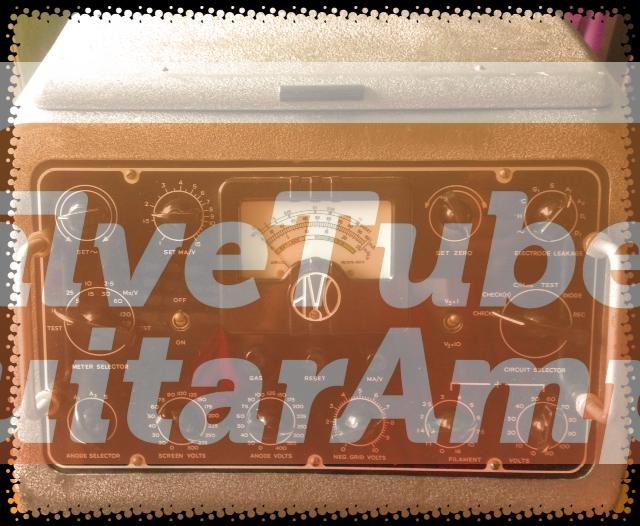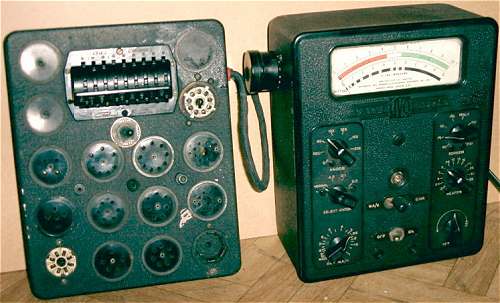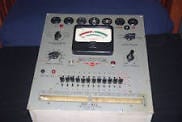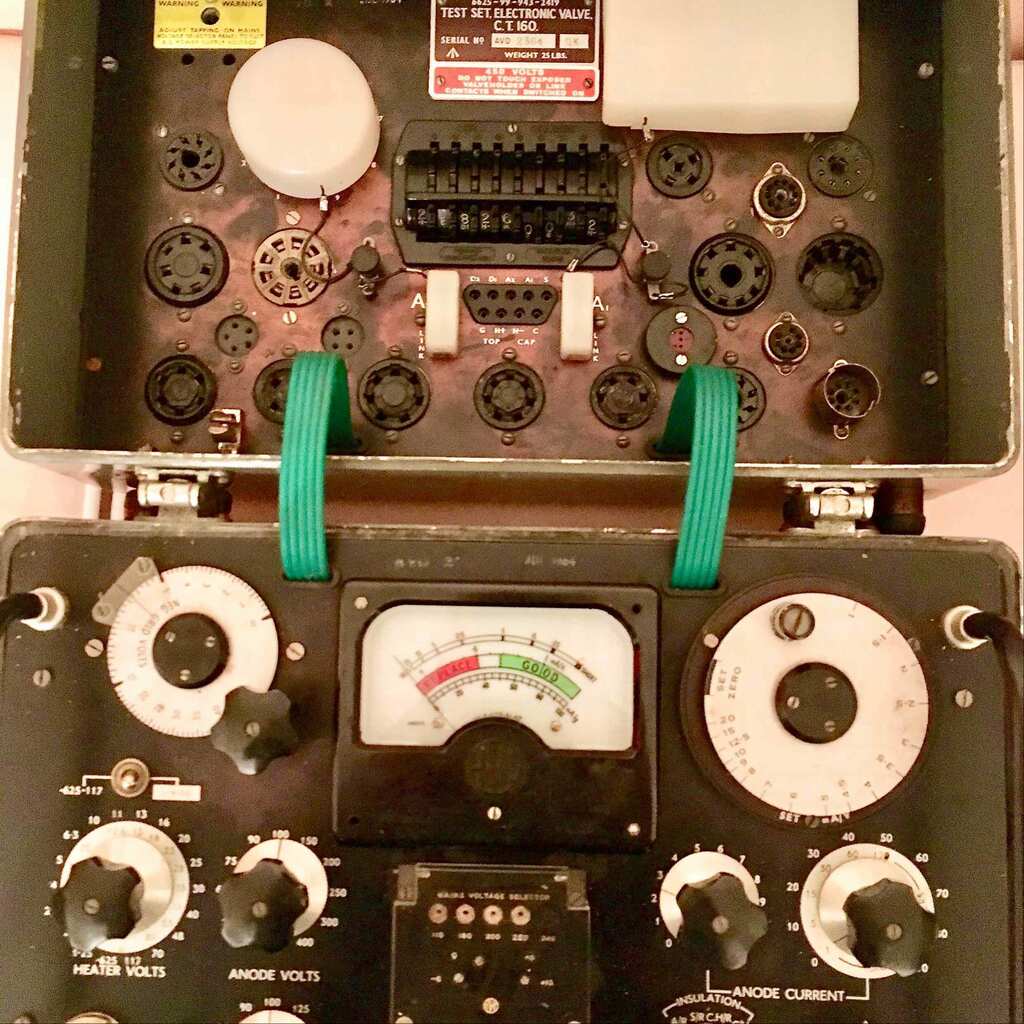Our Valve Test Equipment
Have you ever wondered about how valves are sold as “tested” and why we test ourselves every valve we sell?
We test to make sure that you have a product that is 100% and so you buy in the knowledge that you are receiving a top quality product.
We have six valve testers and each has their advantages and challenges.
Now you may wonder why we test every valve we sell. The reason is simple. Valves are very old technology and some of the valves still made for amplifiers today were introduced to the market in the 1930’s ! . Valves construction has basically stayed the same as back then except that hazardous materials have been replaced ( per EU law). The obvious missing material is lead !! Some of the original materials were rather hazardous so dont be tempted to break the glass on a very old valve !!
Taylor Windsor 45C Tester
This is an original tester from the 1960’s and it has been totally electrically refurbished. Taylor was a manufacturer of valve testers that was based in Slough, England.They made the 45A then B, C D. The later testers like the C are better.

It is critical that you have the original valve data book with the tester to set the circuit selectors or else the tester is an expensive “door stop” . It can test most parameters but its limitation is that you cannot test Anode current and the gain ( called mutual conductance) at the same time. This tester is simple to use but this comes at a price of less ability to do all the tests for matching valves. It is however a very good tester for testing the rectifiers to see that they are operational, and performing well. Interestingly, my collection of vintage rectifiers are “better” than recently made ones. I guess this is the trade-off in not using hazardous materials in modern manufacture.
Avo Mk2
This is a superb tester. Avo, based in Dover in England, is a highly respected instrument manufacturer with a long history of test equipment. I have a totally restored Avo Mk2 version. The Mk2 3 and 4 are electrically identical. The Mk4 has groovy curved handles but they don’t improve the testing !
The downside of this tester is that is much more complex to use than the Taylor or Orange tester but it can do every test and characterisation of any valve as long as you know the pin-out and the specification.

So with this tester you can measure the anode current ( which is a good indication of the valve emission quality) and the mutual conductance at the same time. It is critical to have the Avo valve data to set up the right conditions for testing the valve. This is done on thumb wheels which are exposed when the top lid is opened ( not shown in the picture).
The reason why I say this tester is complex because it is very easy to leave the controls in the wrong position and end up burning out the meter! This is a real problem, because these meters are obviously critical to the operation of the unit and they are non -standard and were custom made for this tester. You cannot obtain an original as these went out of production decades ago. I let no one use this tester except me. If the meter gets burned out, I can only blame myself. I have had some close calls when first using the tester!
Earlier I mentioned that I tested output valves and three were shown as a fail on the Orange tester.
Using the Avo, I found one had an open circuit heater ( also called the filament) and the other two had an open circuit Anode. I must stress though that failures on new valves are very very rare.
A customer is returning one output valve that has “stopped working ” after a few hours and I am awaiting its return so that I can analyse what has gone wrong with it. This is the very first valve which we have sold, that has failed in the field so I am very curious to see why it passed away.
We have a very good relationship with the manufacturer and I return the very units to them so that they can see what went wrong and they report back to me. This helps them get feedback as part of the overall quality improvement process which in turn benefits us all.
Avo CT160
This is another excellent Avo tester and os one of the ” newest ” testers to join our fleet.
It operates in a very way to the Avo Mk2 and can test with anode voltages up to 400 volts. Our one was an ex RAF model and was built in July 1964. It has a neat feature of testing at rated anode current or recommended negative grid bias from the Avo handbook of characteristics of valves. An excellent tester for matching valves

Avo Valve Tester
This is the original Avo valve tester and the one we have dates from the 1940’s. It is old but works perfectly. We can match output valves on this tester.

This tester was made before the B9A based valves existed . The B9A base is the one on the ECC83 / 12AX7. We modified the tester with a socket so we can test all the pre-amp valves. The Cermaic socket is now positioned in the top right hand place where the blanking off panel is located, I coud finfd a video on using this tester
Orange Digital Tester
It tests all the common audio valves, and gives three results, “good”, “worn” and “fail”. Its limitation is that it cannot test all audio valves for example the 12AY7 is used in early Fender amps and also it cannot test rectifiers. While it tests many characteristics you cannot look at what the cause of a failure is. You also cannot an exact numrical value for a parameter. However, it is simple, fast, reliable and easy to use.

We use this tester to weed out any duds that arrive from the manufacturers and for testing valves in amps that I am servicing. On our last order of one particular output valve we found three faulty valves. Later, I will describe what we did to figure out what was wrong with them.
Radio City Model 318 “Tube” Tester
This vintage tester us undergoing re-furbishment and has a neat feature of being able to test for microphonics. We are re-furbishing this test and it should be operational in a few weeks

Finally…..
We offer 120 day warranty on the valves we sell, and you can be assured that we do our best to weed out any weak or faulty valves before you receive your order.

